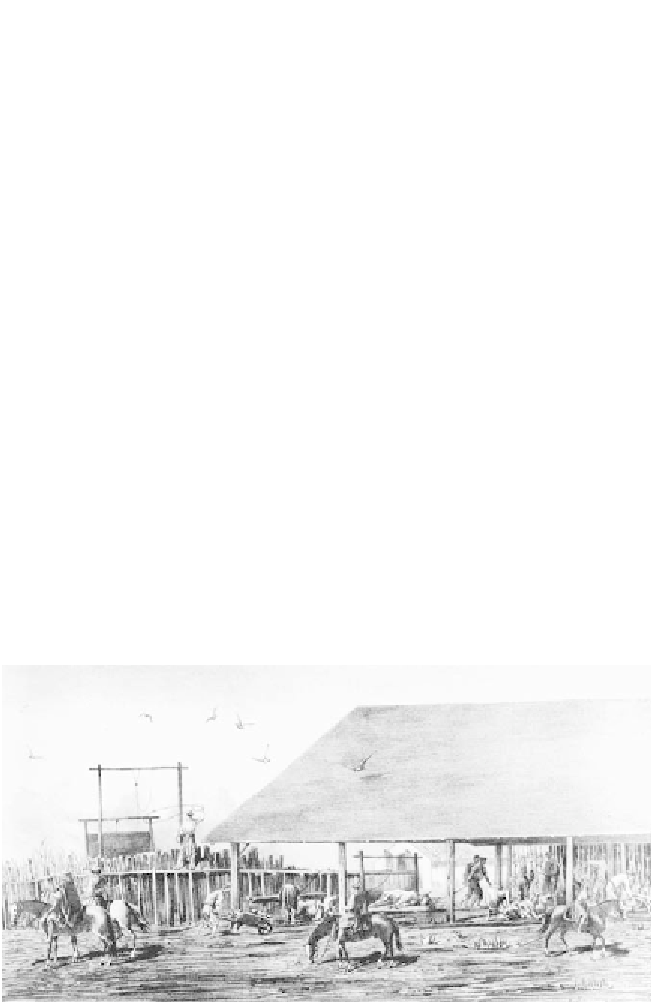Travel Reference
In-Depth Information
misery, and they need many years of peace and tranquility in order to
recuperate their lives” (Szuchman and Brown 1994, 241). It must have
seemed to many an Argentine that, in the revolutionary and civil wars,
the long-term reward of nationhood was economic privation.
International Trade in Buenos Aires
One area of the new nation was better situated than others to recover
quickly from the economic and social dislocation attending the after-
math of revolution. The port city of Buenos Aires and its prairie hin-
terlands to the south and west represented a haven from the prolonged
economic decay. Although the riparian provinces and even the land-
locked interior of Córdoba and Tucumán eventually participated in the
new foreign trade of the Río de la Plata estuary, Buenos Aires province
reaped most of the benefits.
Buenos Aires's phenomenal commercial growth was part and parcel
of 19th-century industrialism in Europe because the city served as the
hub for one of the world's most important suppliers of pastoral raw
materials. Port operations remained basic and unimproved, yet oceanic
ships in increasing numbers risked the hazardous journey up the shal-
low estuary. The export of goods produced on the ranches of the hinter-
lands likewise increased, adding to a commercial prosperity that defied
even the region's political instability and four foreign blockades of the
A
saladero
for processing hides and salted meat. Such crude enterprises supplied what
became important products for Argentina's international trade. Most of the work was done by
itinerant gauchos.
(León Pallière, 1858)



